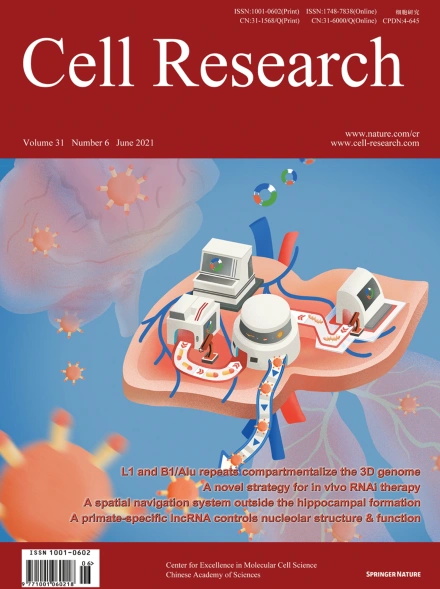
Advanced Search
Submit Manuscript
Advanced Search
Submit Manuscript
Volume 31, No 6, Jun 2021
ISSN: 1001-0602
EISSN: 1748-7838 2018
impact factor 17.848*
(Clarivate Analytics, 2019)
Volume 31 Issue 6, June 2021: 713-716 |
Structural basis of human α7 nicotinic acetylcholine receptor activation
Yue Zhao1 , Sanling Liu1,* , Yingxin Zhou1 , Mengge Zhang1 , Haopeng Chen1 , H. Eric Xu2 , Demeng Sun1,* , Lei Liu3,* , Changlin Tian1,2,4,*
1Hefei National Laboratory of Physical Sciences at Microscale, Anhui Laboratory of Advanced Photonic Science and Technology, and School of Life Sciences, University of Science and Technology of China, Hefei, Anhui, ChinaDear Editor,
Nicotinic acetylcholine receptors (nAChRs) are a class of pentameric ligand-gated ion channels (pLGICs) widely expressed in nervous system. nAChRs function as neurotransmitter receptors that respond to endogenous acetylcholine and choline, modulating neuronal excitability and synaptic communication. The homomeric α7 nAChR is among the most abundant subtypes of nAChR in the brain. Dysfunction of α7 is found to be associated with several neuropsychiatric and neurologic disorders, including schizophrenia and Alzheimer’s disease.1,2 Stimulation of α7 has been reported to improve attention, cognitive performance, and neuronal resistance to injury. Therefore, agonists and positive allosteric modulators (PAMs) of α7 have become hot candidates in the drug development for the treatment of α7-related diseases.3,4 EVP-6124 (abbreviated as EVP) is a high-affinity α7-selective agonist.5 PNU-120596 (abbreviated as PNU) is the first reported α7-selective PAM that could increase the peak current of the receptor evoked by agonists and delay channel desensitization.6 Both EVP and PNU are in clinical trials for the treatment of Alzheimer’s disease, schizophrenia, and cognitive impairment. Despite the significance of α7 in physiology and pharmacology, the mechanisms underlying the activation of α7 upon agonist and/or PAM binding remain elusive. Little is known about the structural basis of the higher selectivity of EVP and PNU for α7, which would be highly valuable for rational drug development targeting the receptor. Herein, we report the structures of full-length human α7 in apo, EVP-bound and EVP/PNU-bound states at 3.18, 2.85 and 3.02 Å, respectively (Fig. 1a–c; Supplementary information, Figs. S1–S4 and Table S1).
https://doi.org/10.1038/s41422-021-00509-6